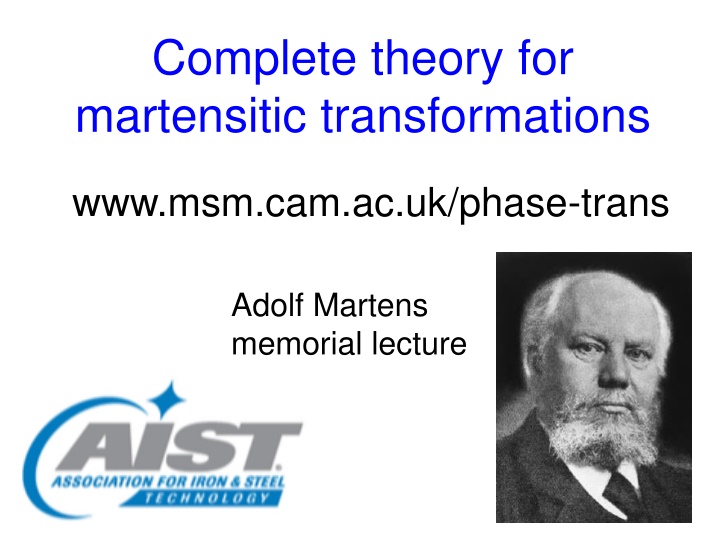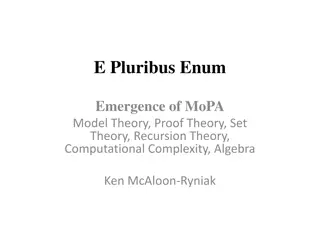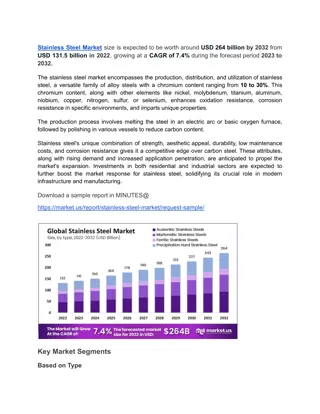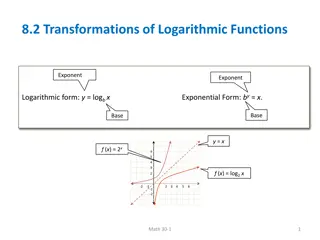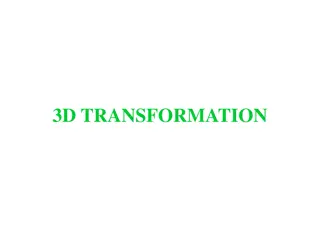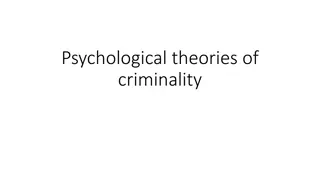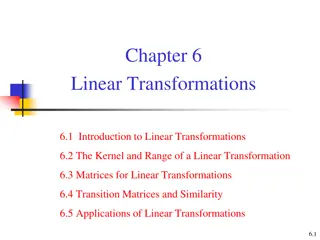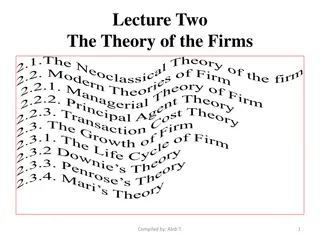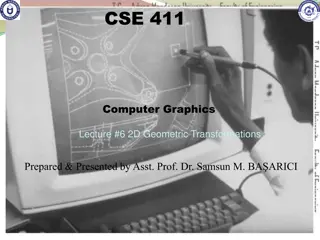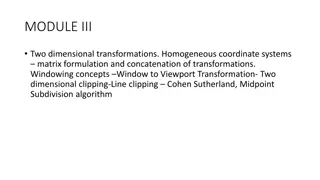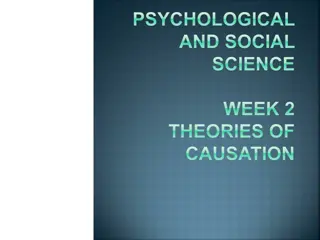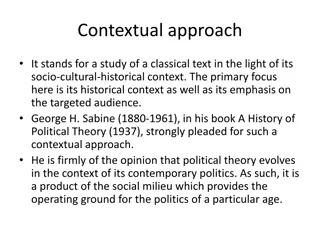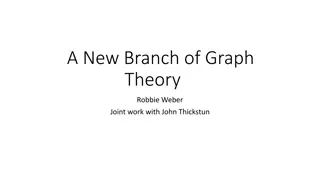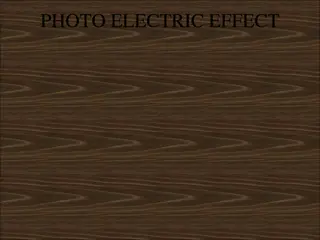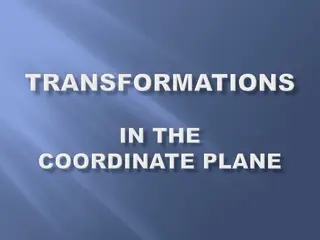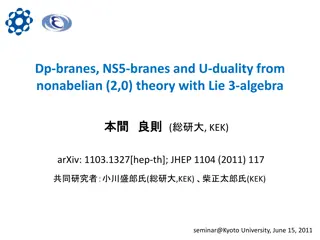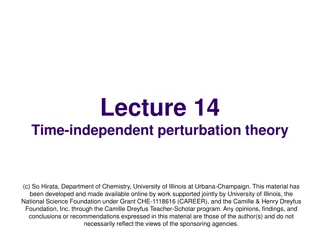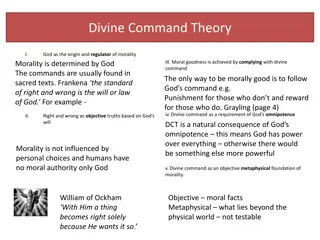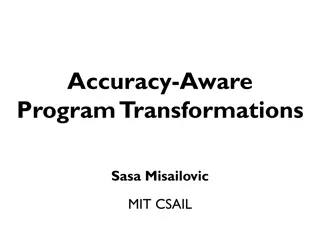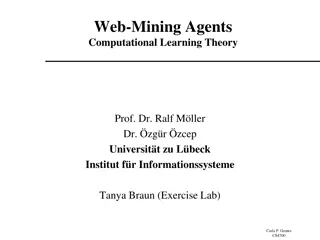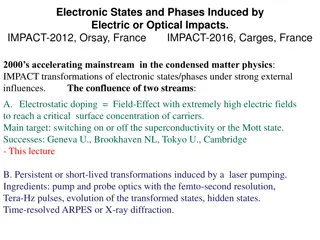Complete theory for martensitic transformations
Unlock the intricate world of martensitic transformations with in-depth insights into the Bain strain, lattice-invariant deformation, transformation twins, athermal transformation, and more. Dive into the fundamentals of martensite and austenite structures, encompassing observations of macroscopic shapes, correct structures, and the suppression of martensitic transformations by rapid cooling. Unravel the complexities surrounding martensite start temperature and the contributions of influential figures in the field.
Download Presentation

Please find below an Image/Link to download the presentation.
The content on the website is provided AS IS for your information and personal use only. It may not be sold, licensed, or shared on other websites without obtaining consent from the author.If you encounter any issues during the download, it is possible that the publisher has removed the file from their server.
You are allowed to download the files provided on this website for personal or commercial use, subject to the condition that they are used lawfully. All files are the property of their respective owners.
The content on the website is provided AS IS for your information and personal use only. It may not be sold, licensed, or shared on other websites without obtaining consent from the author.
E N D
Presentation Transcript
Complete theory for martensitic transformations www.msm.cam.ac.uk/phase-trans Adolf Martens memorial lecture
Bain, Toriano, Wechsler, Liebermann, Reed, Bowles, MacKenzie, Nishiyama, Tamura, Shimizu, Kurdjumov, Roitburd, Khandros, Cohen, Patel, Krauss, Olson, Wayman, Zackay, Wasserman, Christian, Bilby, Hornbogen, Speich, Magee, Koistinen, Marburger, Loretto, Ko
[001] b b' [100] o a' a b (a) o b' (b) a,a'
RB z w w z w z P Observed shape, wrong structure P2 1 Martensite (wrong shape) Austenite y x x y x y (a) (b) (c) LATTICE -INVARIANT DEFORMATION w w z z Twin Boundary x y x y Twinned Martensite Slipped Martensite Correct macroscopic shape, correct structure
athermal transformation
However, martensitic transformation can be suppressed by rapid cooling to 4 K Ullako et al. 1990
Fe-0.1C wt% Influence of tensile stress
polycrystalline austenite 50 m Bhadeshia, 1982
Texture prediction
No method calculates INTENSITY, only POSITIONS of poles
TRIP steels that are fully austenitic are expensive How do we produce cheap austenite?
TRIP-Assisted Steels austenite is expensive carbon can be cheap too much carbon is bad Jae Hoon Jang, In Gee Kim
Cracking of brittle martensite tensile stress in fibre enclosed by matrix
plates become finer than stress-transfer length, and hence do not crack
Austenite grain size effects plates stopped by austenite grain boundary total volume transformed reduced when grain size small detection limit leads to reduction in start temperature
Plastic strain: stabilisation Shipway & Bhadeshia 1995
Plastic strain: stabilisation Chatterjee & Bhadeshia
Classic TRIP-assisted steel stress or strain-induced?
Classic TRIP-assisted steel calculations of austenite stability
Crystallography Interfacial structure Atomic structure Texture Chemical composition Thermodynamics Magnetic Stress Kinetics Plastic strain Critical mechanical properties
Standard thermodynamic databases fail for epsilon martensite
analysis limited to cases where
Pure iron CALPHAD First principles Fe-5Mn-2-Si-2Cr First principles
